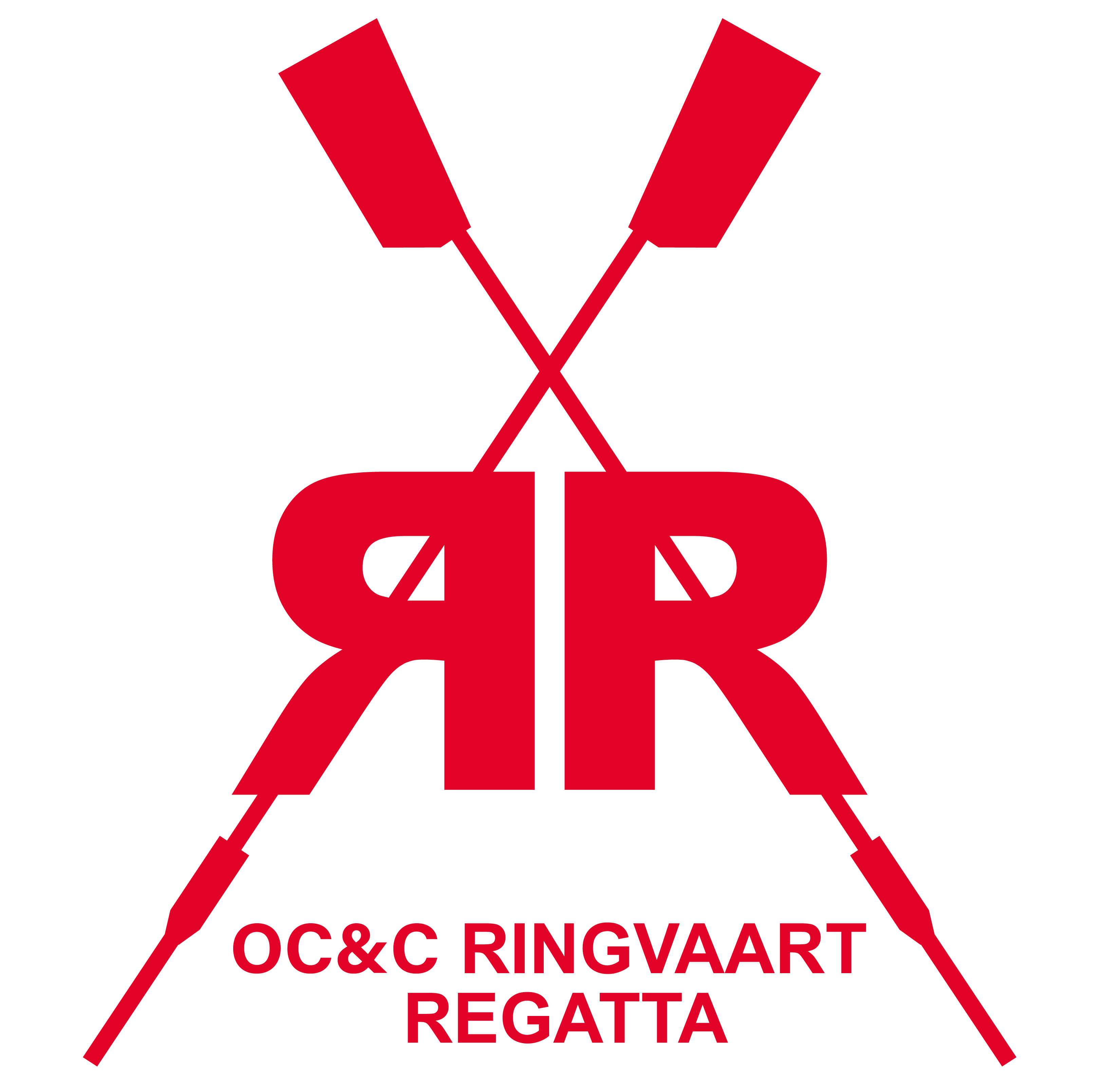In 1976, during preparations for the centenary celebrations of the LAGA Rowing Club, the Njord Rowing Club in nearby Leiden was invited to a monster race of 100 kilometers: the neighboring rowers took up the challenge and the first Ringvaart Regatta was born. The race did not go unnoticed: Aegir rowers from the distant north of The Netherlands also joined at the start. Neither Njord nor Aegir stood a chance against the LALLAs (Long distAnce Laga ceLebrAtions 8 ) that rowed the distance just under 9 hours: the world record for rowing 100 km was set. At this time, the stamina, character and improvisation by the participants were seen as phenomenal. One of the reports of the race tells about the extreme fluid loss due to the hot sun, and that teams purchased extra cool drinks and caps at the local grocer.
In 1977 twelve teams started the race. Loudspeakers were used to warn other non-rowing boats. A so-called ‘Blerco’ (a committee with the sole task of shouting warnings to rowers) was set up to warn against low bridges and other obstacles. The distance was “only” 92 kilometers and won by Proteus-Eretes in a little over 7 hours. In the race of 1978, the first female rowers participated. They completed the race in a faster time than the men just two years before! The number of participants increased steadily each succeeding year. The organisation became increasingly more professional; masseurs and physicians were available, ready to assist exhausted rowers. After 1984, expansion of the event was made possible with the help of a sponsor. The first scenario planners were made and assistance for the rowers during the race was expanded. This had become necessary, because- in 1981- during a stormy wind six boats sank: an unfortunate historical fact. However, more boats have been lost subsequently.
Since 1979, foreign teams started participating: two Italian teams were the first foreigners, and each year more non-Dutch teams joined the race. In 1990, 13 teams from other countries registered. Despite the superb capabilities of the visiting teams, the records remained in the hands of the Netherlands for many years: In 1984, Laga’s Double 4 set the fastest time up to that point, with a time of 7 hours and 10 minutes! During the years the rowing times have become faster. The old records are 6:07:09 for the Men’s 8X+, held by Beatrix from Eindhoven, and the 1994 record for the women’s DDS D4x+ with a time of 7:25:55. The current (new) record for a men’s crew is 7:15:09 set by a 2014 Laga M8+. The women’s record is set by A.R.S.R. Skadi’s W4- in 2014, with a time of 08:35:40.
The EY-Parthenon Ringvaart Regatta has become an open event for various types of boats since 1983 resulting in a substantial number of participating rowers and increasing numbers of teams. The skiff rowers in particular deserve special admiration, as it is no mean feat to row 100 km singlehanded. The record for a skiff is in fact faster than the LALLAs of 1976. Apart from the goal for some rowers to set new records, many rowers enter just aiming to complete the 100 kilometers. Consequently, after 1985 the course was separated into a course for achievement and the course for records. Many of LAGA’s teams are inspired for the race, and although they have never participated in a serious boating event, they start training only four months before the Regatta and succeed in completing the race.
The EY-Parthenon Ringvaart Regatta has undergone numerous changes during the past 45 years. The marathon rowing race has become a professional event thanks to the dedication of LAGA Rowing Club’s organising committees each year. The regatta is the only race of 100 km in the world, thus many rowing teams try to establish new records whether it be for time, distance or size of the boats. In 2005 two special boats participated: an Ocean Fours and an Ocean 16+. The Ocean Fours had rowed across the Atlantic Ocean in June 2005. In 2005, they rowed the Ringvaart twice within 24 hours. The rowers started and ended at LAGA club and made a brief stop on the Kaag. This grueling 200 km race was an excellent measure of physical stamina and mental endurance. In honour of the 130th anniversary of The Amstel Rowing Club, the 16+ participated in the Ringvaart. This boat was 32 meters long, the longest rowing boat ever. Originally the boat –built by Stampfli in Switzerland- was 44 meters long and used in the world cup in Munich, but was reduced in size for this race with its tortuous course with narrow passage ways. The race has been rowed more than once by a number of rowers. In 2009 Rob Muda rowed it for the 25th time, making him the most frequent participant of the Regatta. This year the EY-Parthenon Ringvaart Regatta will be organised for the 45st time!

